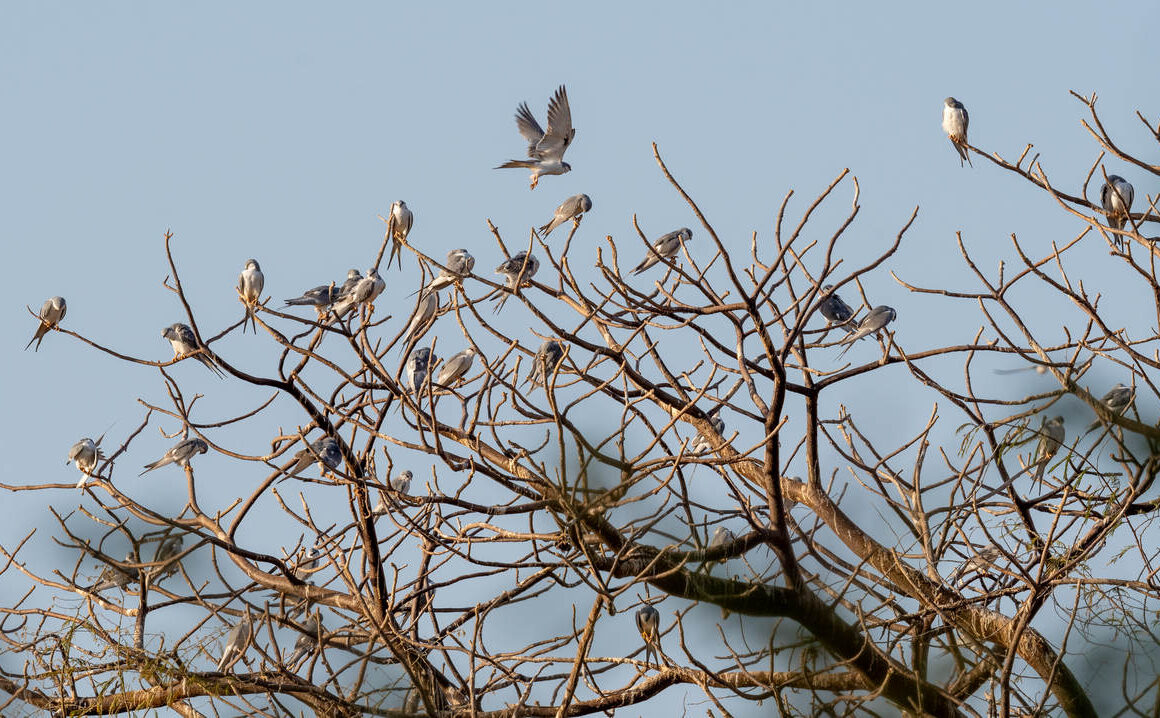
Hannah Buschert started birding in college thanks to a required Biology of Birds course and a professor who included Sir David Attenborough’s Life of Birds to punctuate lessons. Almost as if by accident, Hannah landed the dream job of Park Ranger in the Rio Grande Valley at Bentsen-Rio Grande Valley State Park where she guided many birders who filled her head with far-off destinations and incredible birds. Called home to the Oregon Coast to operate the family motel, in her free time she leads Tufted Puffin walks and escapes to guide at birding festivals and explore the world as often as possible. Hannah is passionate about travel, tourism, and birding and hopes to inspire others through her podcasts: Hannah and Erik Go Birding, Women Birders (Happy Hour), and Bird Nerd Book Club.
For myself and my husband, travel is flexible. There are some places we want to see in our lives, birds we want to get, but we are also driven to visit places where we know few people who have gone. eBird is a huge help with that. Kenya, Tanzania, and South Africa are heavily eBirded because Americans regularly visit. So, when searching records, we noticed a lack of eBird reports in Senegal and The Gambia. There are some lists there from the few Americans that have visited and the rogue European birder that has taken to using eBird, but otherwise, it is fairly under eBirded. According to Google, Senegal is about the same size as South Dakota. eBird shows that as of this writing, 9479 have submitted 142.2K lists in South Dakota and Senegal has had 757 eBirders submit 12.1K lists. Of course, there are factors in play, a glaring one being listing platform preference (eBird vs. BirdTrack, for example).
With a warm, dry tropical climate, it is no surprise that Senegal is a popular West African destination for European travelers as it is a relatively short flight to escape winter weather.
To reach Kaolack, you will likely either fly into Dakar or Banjul, Gambia. Kaolack is about a three-hour drive from either starting point (however with the Banjul route you get to take a wild ferry ride and go through a maze of border check stations). Driving through Senegal, you see dusty village streets with small, clay houses and women sitting out front selling watermelons, bananas, or oranges. Sahara dust is heavy and very noticeable as it obscures the sunrise and colors the sunset – not to mention constant dust in your shoes. But one of the real treasures of Senegal lies near a town called Kaolack. This is where you find a birding phenomenon that makes the annoyances of regular road checkpoints with either military officers or local law enforcement, whizzing scooters, and bumpy roads worth the effort.
We ended up in the area just south of Kaolack at around 4:00 pm where we headed off the highway into a small village along the Saloum River. There, we picked up a local guide from the village with dozens of wide-eyed kids shouting “toubab” at the car (translates from Wolof to “white person”) and drove off towards the river. I did not have a great idea of what we were doing, but I was along for the ride, so I was a bit confused when we first parked, and the river was not in sight. I soon understood that we had arrived a bit early so we could wander through a dusty, shrubby field to spook up a Savile’s Bustard. Bustards are awkward birds who bounce around in the brush. To me, their silhouette looks like a large shorebird or miniature Ostrich, they are good-sized birds with thin necks and legs and large heads. Various species can be found in dry grassland habitats in Africa, Eurasia, and Australia, so it is fun for a North American to stumble upon this not frequently-seen-bird. After scouring the terrain for about one-half mile we were lucky to have one flush up and then trot awkwardly away while donkeys looked on and brayed in our direction. Then off in search of the main event!
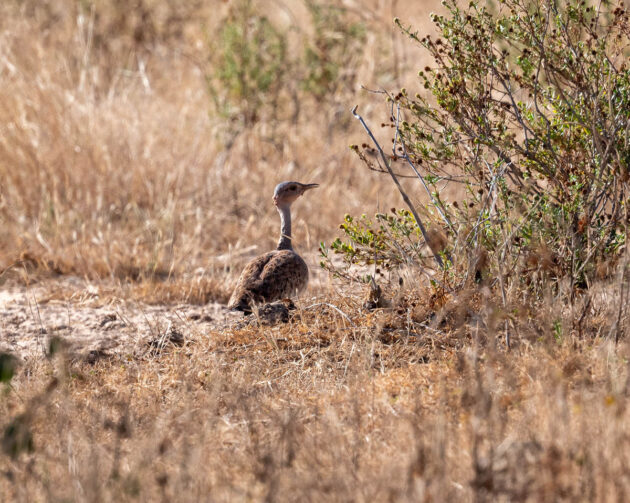
The Saloum River floodplain is wide, salty, and muddy, so rain boots are highly recommended. The local guide paddled us across the short, slow-flowing river in a narrow canoe and then we sloshed through the mud towards the tree-lined oasis across this hazard.
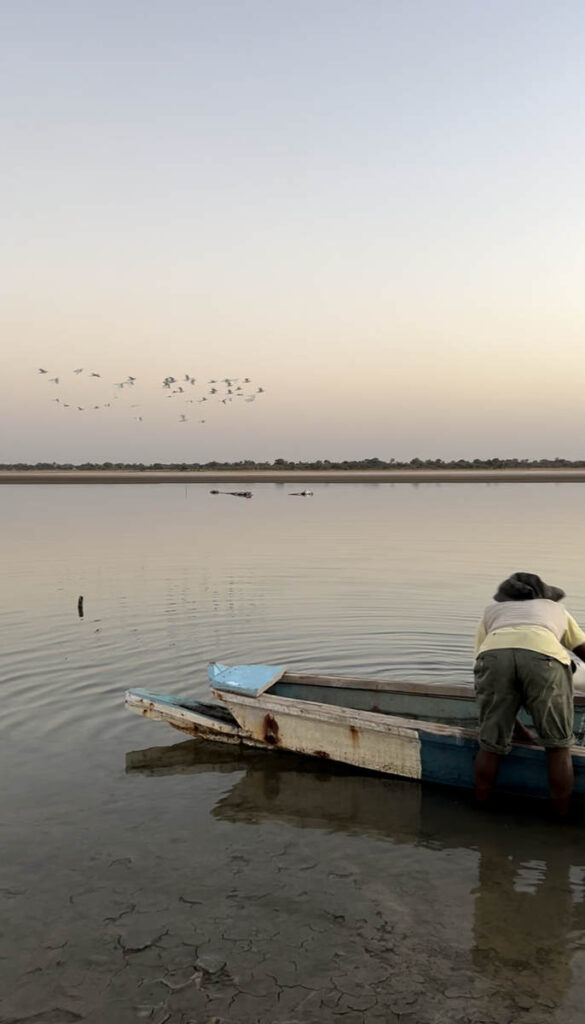
Our two local guides did not bother with boots and simply walked barefoot through the thick mud which varied from a beautiful deep indigo color once you broke the surface to a boot-sucking chocolate mess. As this is a roost site, the best time to take this journey is also the hottest part of the day and with the difficulty of slogging through the mud with caked boots, I contemplated telling my group to continue without me.
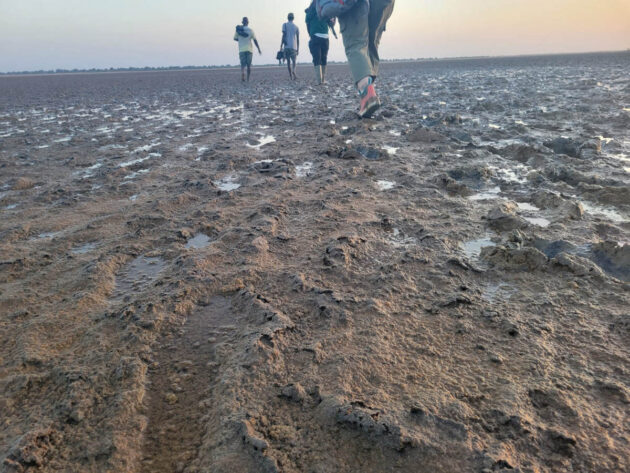
However, once we reached the tree line, there was a well-worn path into the stake-out which was only a couple of hundred feet further. Much to my pleasure, it was shaded and a good spot to recover from the heat.
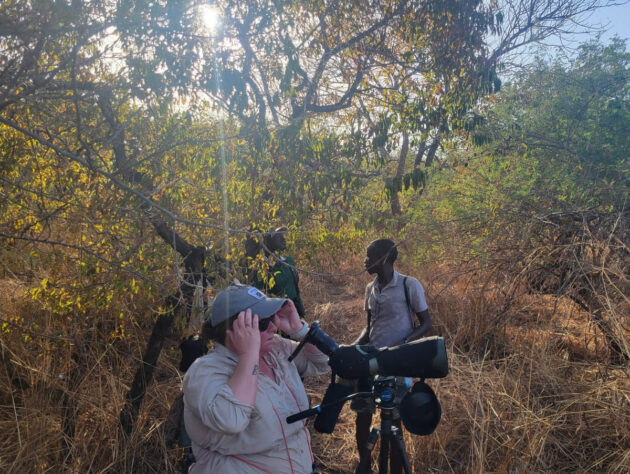
As the sun moved towards the west, we began to see our target birds swarming in the blue – thousands of Scissor-tailed Kites. This is a known site for Scissor-tailed Kites who roost nightly during November through March. After a day of searching out lizards, rodents, and bugs, they overnight in humongous baobab trees along this stretch of river. When we first arrived, they were flying high up but as the sun lowered, so did the swarm. With the naked eye, you could see the silhouette of the birds with their long, forked tail and overall white undersides. Putting up binoculars you can see the black patagial patch on each wing. Suddenly, one after another would swoop down towards the highest branches of the baobab scoping out the scene. Eventually, the swooping turned to perching and soon the trees were loaded with kites. They are a beautiful bird of prey capped with gray that goes down their back and a streak of eyeliner making it look more like a White-tailed Kite while perched than a Swallow-tailed Kite.
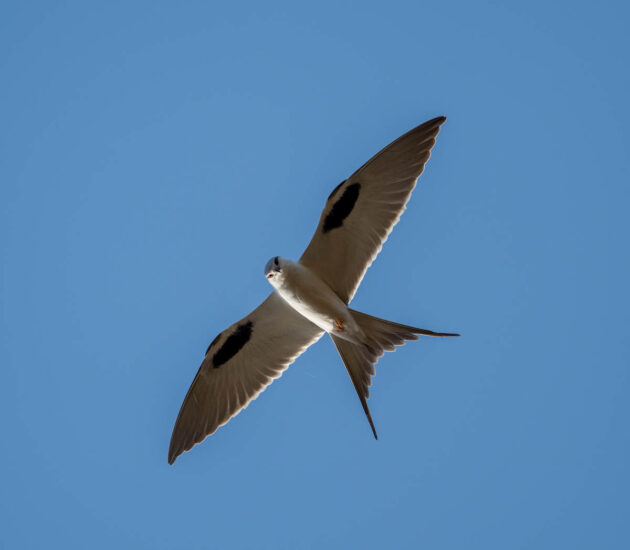
After the journey to reach this destination and without the noise of constant traffic, honking horns, and talking in the background it was easy to imagine I was in the depths of the wilderness. So, I chuckled to myself when, sitting at the base of a large baobab tree in the wilds of Senegal in 100F afternoon heat praying for every breath of wind as thousands of Scissor-tailed Kites swirl above me anticipating roosting for the night, I got the ding of a Costco ad on my phone. An hour into the spectacle, we had counted 2500 Scissor-tailed Kites who were perched in the trees or still soaring above. What a majestic bird worthy of the struggle to get to the site.
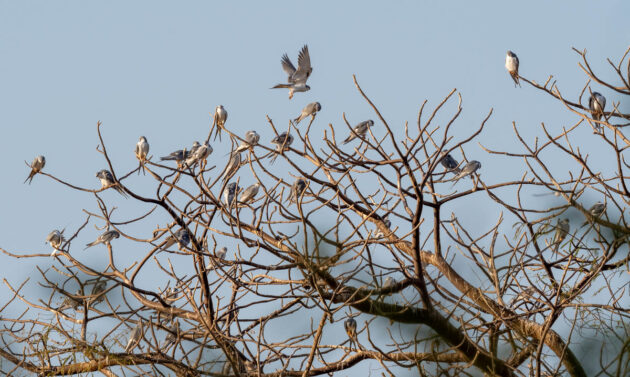
We walked back to the edge of the forest and scanned the river for a few minutes and tacked on Greater Flamingoes, 70 Lesser Kestrels, and a few vultures to the list before the trek back over the mudflats to reach the canoe. The sun was setting, the air had cooled off, but a salt layer clung in the air as I felt some relief that I had made it that far without dying from the heat. By the time we had made it back to the car and were heading back to drop off our guide in the village, a Long-tailed Nightjar flew in front of the headlights and aided us in adding another lifer to the day.
Scissor-tailed Kites – while not threatened now – are a vulnerable species. Habitat degradation is a huge possible threat to the species. And large congregations like we saw, can easily be impacted by localized events such as damage to the roosting site. Pesticide use is also a possible threat to the population. On eBird there are only 556 records of this species, so you might think they are rather rare. However, that simply shows recording bias and a need to expand usage OR
After having birded in Senegal, here are some notes I would mention to other potential travelers:
- Heat. In the dry season, every day is between 95-100F with clear skies and little humidity.
- French and Wolof are the two most common languages we encountered with English being very infrequent. We were greeted with “bonjour, ca va?”
- I recommend a guide or at least a driver. Crossing the border into Senegal is a multi-step process that is super complicated with no instructions. And then driving in Senegal? We were met with regular checkpoints and were hassled by local authorities.
- You better have CFA (West African Francs). We spent about a week in Senegal, and we had traveled there loaded with British Pounds, Gambian Dalasi, and United States Dollars, and a suite of credit cards, and not one of these were accepted. Drinks at hotels or at convenience stores had to be purchased with CFA, which we were unable to order from our local bank.
Senegal might not be at the top of your travel list, but I think there is a lot of beauty in the hard-worked, desolate landscapes, women dressed in bright, beautiful dresses, fresh watermelons, donkey-drawn carts loaded with hay, people, or watermelons, and the interesting intersection of what French influences remains from colonization (which was relatively recent, having only gained independence in 1960), Islam influences, and Senegalese heritage. Not to mention thousands of Scissor-tailed Kites!
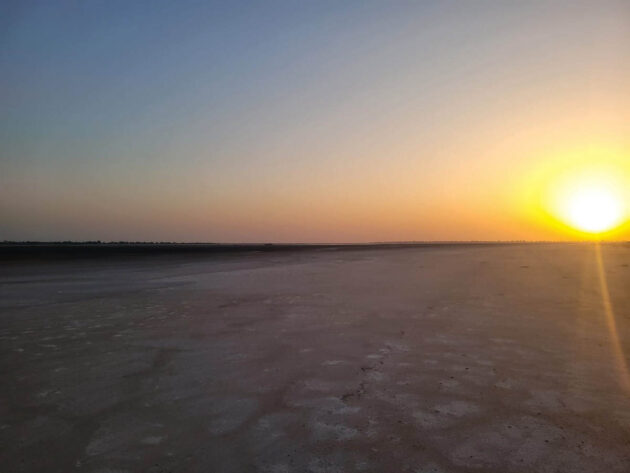


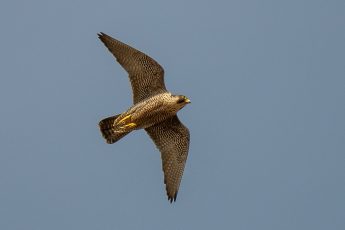
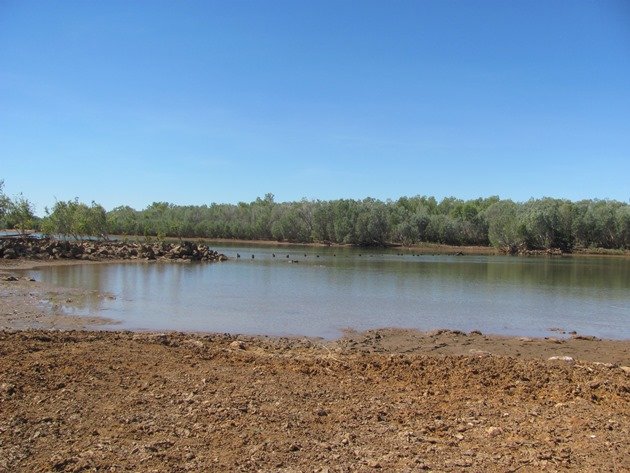
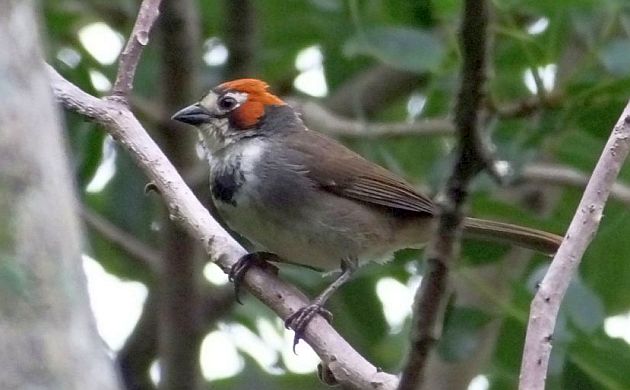

 New writers welcome – please contact us for details.
New writers welcome – please contact us for details.

















Leave a Comment